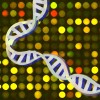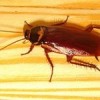Blackburn, Greider and Szostak share Nobel for Telomeres
Nobel Prize week kicked-off today with the announcement of the Prize in Physiology or Medicine. As predicted on these pages, Elizabeth Blackburn, Carol Greider, and Jack Szostak shared the award for discovering telomeres and telomerase. This is particularly good news for Cold Spring Harbor Laboratory, which was home to Carol Greider when she made the pivotal discovery of isolating the RNA gene that encodes for the telomeric template.

Carol Greider isolated the Telomeric Gene while at Cold Spring Harbor Lab
What is a Telomere?
A telomere is a region (or cap) of repetitive DNA at the end of every chromosome that basically protects the chromosome from deconstructing. Telomeres are an important element of the cell cycle – after every round of cell division, telomeres get shorter to the point where they no longer exist (and the cell is then destroyed).
What is Telomerase?
Telomerase is an enzyme that works against this type of shortening – it replenishes the chromosome by adding DNA sequence repeats to telomeres regions. It is particularly important during prenatal development, where it buffers against cell-instability and aging. When we mature, telomerase “switches off” in virtually all tissues, ensuring the cell will only complete a certain number of divisions (e.g. 20-70) before dying. The switching off of telomerase is important process in cancer biology – unrestrained dividing (i.e. cell immortality) is a classic hallmark of the cancer cell.
How was the discovery made?

With Joseph Gall, Elizabeth Blackburn pioneered the discovery of telomeres
With a lot of hard work! In 1978, Blackburn and Joseph Gall, then at Yale University, published a landmark paper, identifying telomeres paper as a repetitive chain of six-nucleotide sequences that comprised the chromosomes’ end. In a number of studies in the 1980s Blackburn and Szostak confirmed that these repeats stabilize chromosomes inside of cells and also predicted the existence of the telomerase enzyme.
Blackburn moved to the University of California and recruited Carol Greider as a graduate student. In what the Lasker Foundation described as a “tour de force of biochemistry”, Greider purified the telomerase protein and demonstrated its enzymatic activity. Greider moved to Cold Spring Harbor Laboratory, where she achieved the ultimate milestone of isolating the RNA gene that encodes for the telomeric template.
The award recognizes importance of telomeres and telomerase to understanding the fundamental properties of the cell and cell-division. Telomeres and telomerase are important components of aging and cancer research.
Blackburn, Greider, Szostak, and Gall are currently based in the University of California, San Francisco , Johns Hopkins University School of Medicine, Harvard Medical School, and the Carnegie Institution respectively.
| Print article | This entry was posted by connolly on October 5, 2009 at 8:43 am, and is filed under DNA From The Beginning. Follow any responses to this post through RSS 2.0. You can skip to the end and leave a response. Pinging is currently not allowed. |








